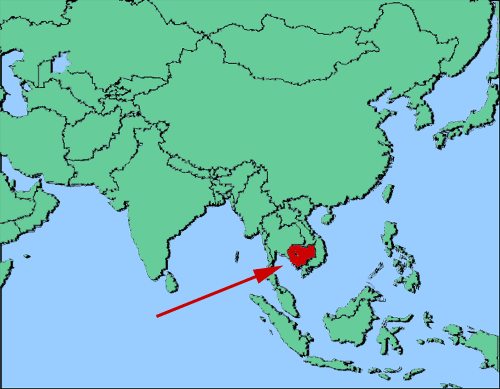
Circle the area on this map

D. Vietnamese troops invaded Cambodia in 1978 and ousted the Khmer Rouge regime that had ruled since 1975. Cambodia is bordered by Thailand to the northwest, Laos to the northeast, Vietnam to the east, and the Gulf of Thailand to the southwest.
B. Under King Norodom Sihamoni, the government is a constitutional monarchy operated as a parliamentary representative democracy. Officially a multiparty democracy, in reality the country is a one-party state dominated by Prime Minister Hun Sen, a recast Khmer Rouge official in power since 1985.
C. Rice is the staple food and primary crop in Cambodia. Agriculture employs about 49 percent of the nation's workers. Other crops include rubber, corn, vegetables, cashews and cassava.
A. About 97 percent of Cambodia's people are Buddhists. Angkor Wat was originally constructed as a Hindu temple for the Khmer Empire, and gradually transformed into a Buddhist temple toward the end of the 12th century.